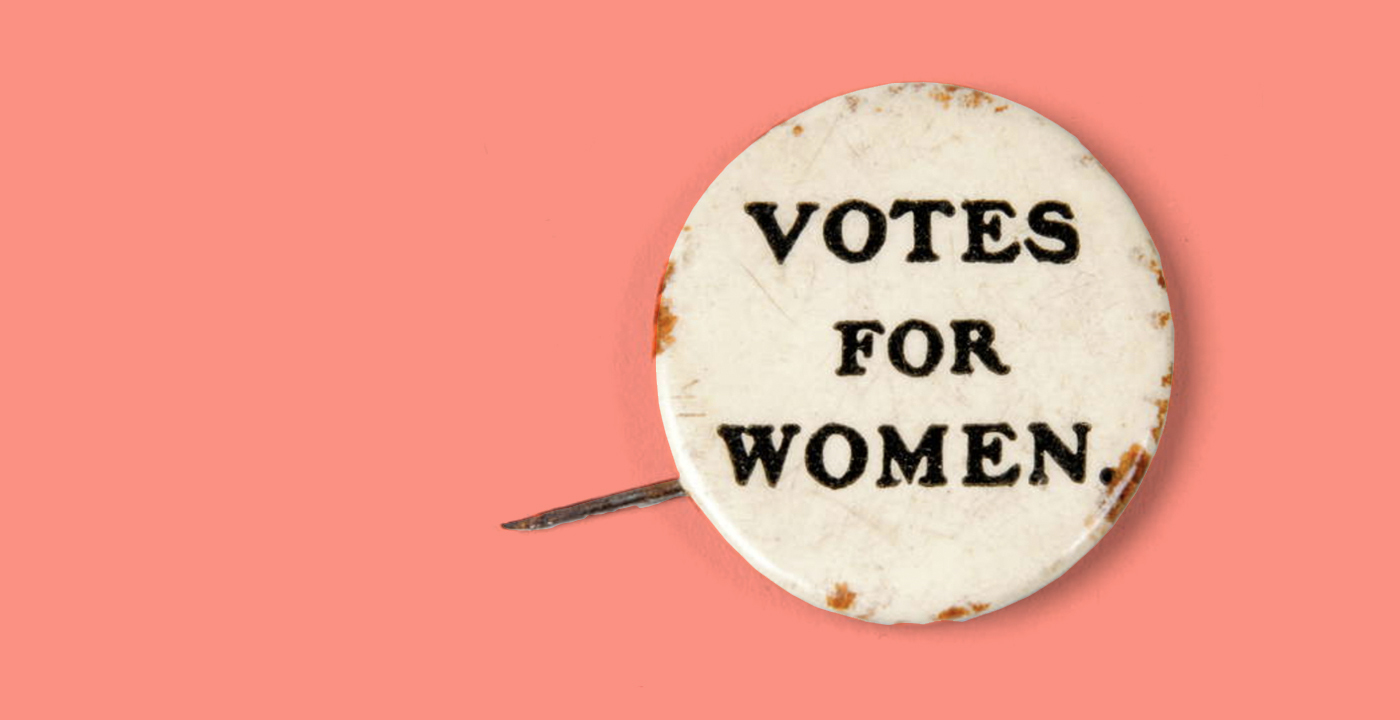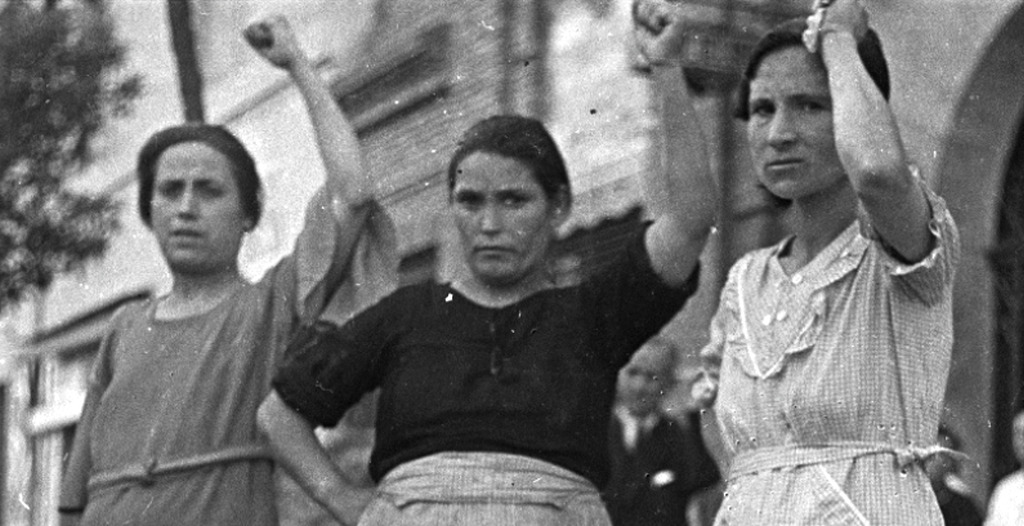Welcome to The New Historia, the gathering place for new knowledge being recovered by and about women who came before us. Together with our community, we celebrate the richness of the female past that is our shared legacy. We seek ways to make this emerging history of use to girls and women who continue to confront the misogyny that is woven into our private and public lives.
The Digital Loom Room
The New Historia website is a collaborative community of knowers, learners, makers, and doers. We envision our website as a digital “loom room” like those of the past, and in many places still operating in the present, where women created the material “stuff” of civilization, and, in the process, interacted, learned together, and invented technical and aesthetic advances that continue to influence our lives today. Loom rooms have always been sites of women’s education, socialization, and innovation.
Female Laboratories
Like historical loom rooms, ours is also a laboratory in which we gather and process new evidence produced by the exuberant global project of feminist historical recovery. We date the beginning of this initiative to 1946, when Mary Ritter Beard published Woman as Force in History: A Study in Traditions and Realities, although the book and Beard herself are now mostly forgotten. As a practicing historian alongside her husband, Beard had grown ever more frustrated by the absence of women in accounts of the past. She observed with irony and conviction:
It is hard to miss woman as a force if one keeps one’s eyes open and seeks, in the scientific spirit, the truth about woman as revealed in a documentation as diverse as it is ponderous, if one is not afraid to know her, if one really wants to know her.[1]
Galvanizing Marginality
In the mid-20th century, increasing numbers of women earned doctoral degrees, made possible in part by having greater control over their time and energies with the availability of the birth control pill and other reproductive technologies. One dramatic effect of this was that a group of women trained to discover new information were not afraid to know the women we found. We really wanted to know them. This consuming interest in identifying foremothers—both female scholars and teachers, and the figures who came before us—has developed into a passionate global enterprise.
Studying Women
In 1976, the National Women’s Studies Association was organized. Soon after, Catharine R. Stimpson, Louise A. Tilly, Rayna Rapp, Mary Edwards, Ellen Morgan, Kathryn Kish Sklar, and Rachel Maines reported on the status of women’s studies. On their behalf, Stimpson enumerated the promise and problems of the enterprise that she dubbed “Galvanizing Marginality.” “Despite the marginality,” she wrote, the galvanizing quality of women’s studies—the energy and creativity—is vitally apparent to those of us who believe in them. We need no longer call for a feminist sociology, or for a feminist criticism, or for a women’s history. Their beginnings are there. Ironically, even people in women’s studies may not always appreciate the quantity and quality of work that has been done and that is being done.[2]
The Plausibility of Change
Stimpson outlined the multiple initiatives that women’s studies would necessarily entail and stressed the consequences of a feminist vision of the past, characterized by an “implicit sense of history as ‘a process of change’; as a series of phenomena in which beginnings may resemble and generate, but only resemble and generate, middles and ends. […] The belief in the plausibility of change underpins the efforts to bring about change.”[3] Stimpson described the budding international reach of feminist inquiry. She concluded with a visionary prediction: “[W]e believe that we are doing something fresh, and in the company of others…. This happy flight, as we fight against our marginality, is a source of our galvanizing strength.”[4]

Out of the Cloisters
The study of earlier women has been mostly carried out in solitude in libraries, archives, excavation sites, and faraway museums and private collections. The fruits of the research have been shared at academic conferences and made public in print for mostly scholarly audiences. That must change, and is changing. Digital advances and the enforced isolation of the COVID pandemic beginning in 2020 encouraged us to find new ways to share information about the process of feminist recovery. We build on these to open the doors to information. Increasing violence against girls and women makes it imperative to circulate and publicize the new knowledge about all women that has not been available or easily accessible, in ways that entertain as well as inform.
"The New Historia presents women’s history life by accurate life, writ small and intimate, and in the aggregate, large, public, and revolutionary."
The New Historia Schemas
Schemas are the beating heart of The New Historia, representing knowledge in motion. Collectively, they pose the question, How do we tell a woman’s life as rigorously as possible, especially when it is far removed from our time and place? The 50 or more that are available on the website as of its launch represent the extraordinary efforts their authors made to map all there is to know about an individual at the time they are produced. They are not meant to be encyclopedic, that is, entries which promise that they are the final word on the subject. We expect that new materials by and about a figure will emerge, previously unforeseen information about the contexts in which we attempt to understand her may alter our perspectives, and new techniques and experimental technology may startle us with unexpected findings.
A Little History
For several reasons, our present collection of Schemas is idiosyncratic, produced by authors from a wide variety of disciplines. The immediate impetus for The New Historia emerged from The Female Biography Project, a five-year initiative in which 200 scholars and I, as editor, produced the first modern scholarly edition of Mary Hays’s Female Biography; or, memoirs of Illustrious and Celebrated Women of All Ages and Countries. Alphabetically Arranged, in six volumes. When it was published in 1803, Female Biography was the first biographical history of women in English by a named female author, and the first collective history since Christine de Pizan’s City of Ladies (1405).
Female to Feminist Biography
Hays included 302 figures in the six volumes. As editor of the modern edition, published by Routledge in 2013, 2014, I read scores of annotations by the scholars, many of whom were specialists in specific figures, eras, and genres. As I read, I realized that an alternative narrative of even well-known figures was emerging because of the six decades of research and new knowledge produced by feminist scholars. I also recognized that collectively, this new narrative did not comfortably fit into the conventional story of history that, since the ancients, had authorized only the accounts of the past by, for, and mostly about men. A new human history was emerging in the endnotes, pressing outside the covers of the books, demanded in the classrooms where we teach, that challenged the established systems which structured, and increasingly confined, our findings about women. For the first time, history would have a female dimension, a new historia.
Hays was a religious and political radical who wrote about the evils of the slave trade and enslavement. Phillis Wheatley’s Poems were read and commented on within Hays’s circles. Yet Female Biography offered lives of only a few women of color; Matoaks or Matoaka, better known as Pocahontas, was the only early modern indigenous figure with an entry. Recent scholarship suggests that Hays may have been the first to call attention to Matoaks’s importance in the early encounters with Europeans and to represent her as a “model” for other women, even before her Christian baptism. The hundred sources available to Hays that we could identify for Female Biography were predominantly by male authors, and, therefore, referred to a few women or none. Misogyny, racism, and intolerance structured the knowledge available to her. In this way, Hays participated in perpetuating ancient assumptions about inclusion and, especially, exclusion.
The New Historia is keenly aware of the persistent prejudice inscribed in earlier women’s accounts. Addressing and correcting these is a crucial concern in the choices and production of Schemas moving forward. We aspire to change the record of the past by creating a panorama—not a pantheon—of female lives from all times, places, races, sexual identities, and religions.
Please help us achieve this goal.
As the idea for The New Historia advanced, and with the counsel of many colleagues, I began to seek evidence of new approaches to discovering and recovering earlier women. I reached out to innovative researchers in Bronze Age mummies and the vibrant, more recent lives of women such as the environmental activists Berta Isabel Cáceres Flores and MaVynee Betsch.
Patterns
Abundant data reveal that women share more convergences than differences. The New Historia Schemas make it possible to imagine an individual woman’s experiences more accurately. Now, for the first time ever, we can bring women of the past into speculative conversation with one another and with us. The New Historia Patterns experiment with bringing together earlier women’s accounts and reflections on those experiences and the obstacles that affect every woman’s life, no matter when or where she lived, and that are the direct and indiscriminate effects of historical misogyny. Feminist historical recovery now allows us to document the convergences among individual, collective, and public responses to the persistence of these “wrongs of women,” as Mary Wollstonecraft described them. The New Historia Patterns are collections of Schemas, texts, and images that illustrate the intersections rather than the differences between and among women’s responses to both the persistence of and the resistance to these universal phenomena which Wollstonecraft identified as “The Rights of Woman.”
Historical Misogyny, or Why Don’t Things Change?
Reports are that one billion girls on TikTok demand to know why circumstances have not improved for them and, in fact, are getting worse. The New Historia responds to the enduring misogyny that dominates our lives, whatever we would wish to believe, and that impedes and sabotages the circulation and influence of new knowledge about women. Ignorance and intolerance about all women persist.

Poised to Launch
As I write, Russia has invaded Ukraine, and the reality of a bitterly divided political culture threatens the gains women have made everywhere. Public commentary tells us what we already know: the structures we have counted on in politics, education, sports, industry, entertainment are failing and continue to fail. All of these are derived from ancient male systems of producing and organizing information that evolved in the absence of women. The New Historia asks, how can information about women counterbalance the same old ways of doing things that are not working?
Ignite a Revolution
From our perspective, we are poised to ignite a revolution in knowing about women: for the first time in human experience the ongoing project of feminist historical recovery has produced a critical mass of information about more women of the past than we could have ever imagined existed. These figures left evidence of their lives that later disappeared, was sometimes resurrected, and then was lost again and again and again. Knowing is powerful, and women can become more powerful by galvanizing the new knowledge about women’s documented contributions to society; broadcasting the roles women have always played in human endeavors; and insisting on a central place in our cultural dialogues for women’s voices—present, past, and future.
Glimpses of the Future
For the first time, too, we have the technology to secure these figures for posterity. The New Historia Schemas present authoritative, transdisciplinary, highly condensed feminist biographies that highlight women’s ingenious responses to prevailing systems and structures. We share these stories on an interactive, immersive digital platform, using technologies that create new experiences, stimulate further discoveries, and reveal unimagined parallels. The New Historia Patterns document another history that values the roles women have always played in human endeavors. New Historia Editorials and Thinking Pieces from a broad range of commentators offer new prisms to understand the female past; they provoke us to consider the traditional terms in which we understand new phenomena, like the gathering demand for statues of Monumental Women that may alter the historical landscape everywhere—and the controversies these arouse. Our Discoveries newsletter will highlight events, new works, calls to action, and other matters that we judge are vital to our community.
How Do We Go from Marginal to Central?
The New Historia is a process, not a series of isolated events, divas, or star turns. It does not rest on conclusions or theories or stasis. The warp and weft of the culture we are creating depends on experts and beginners and students, artists, writers, sculptors, TikTokers and Instagrammers, all of whom are eager to make the women before us visible and useful to our lives today. Please join us in this enterprise by offering to write a Schema or suggesting additional information for an existing one; propose an idea for an Editorial; imagine a new Pattern or recommend someone (including yourself) to serve as Pattern editor for one already identified; take a look at our social media posts, and share, react, and suggest other subjects and platforms; submit items for our Newsletter; tell us about a new book and offer (or suggest someone else) to review it. Send us your ideas for every kind of medium that enlivens the presence of the past today. And please help us with visibility and raising money.
Together, let us give silent recognition to the myriad women who came before us and whom we cannot even remember to forget.
Onward.
Gina Luria Walker is the director of The New Historia.
Notes
[1] M. R. Beard, “Woman As Force in Long History,” Woman as Force in History, New York, The Macmillan Company, 1947, chap. 12, p. 274.
[2] Catharine R. Stimpson, “The University of Michigan papers in women’s studies,” Women’s Studies : An Overview, vol. II, 1977, pp. 14–26.
[3] Id.
[4] Id.


